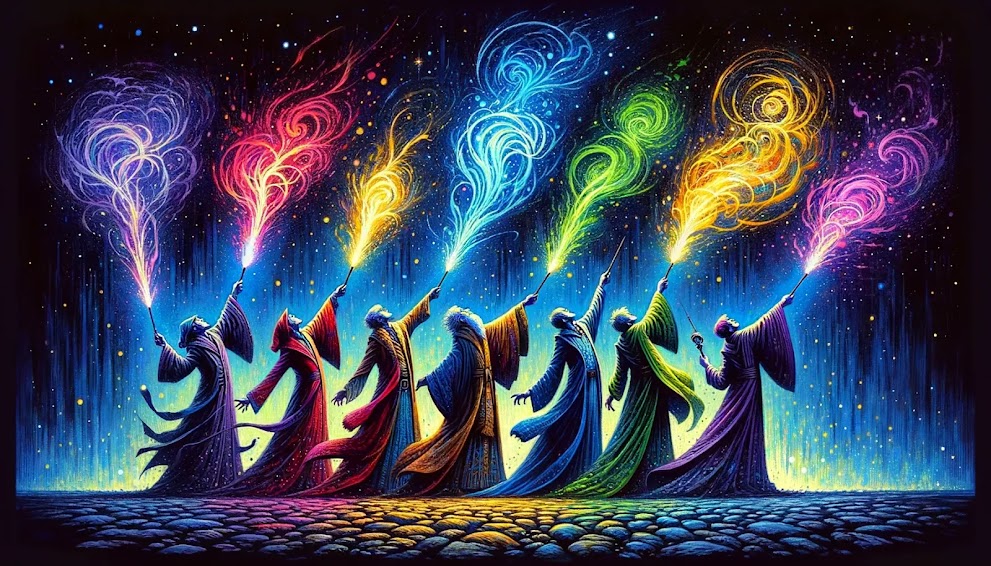Religion
February 26, 2024
Exploring the Realms of Demonolatry and Demonology
Demonolatry and demonology are two distinct fields that, despite their similar-sounding names, diverge significantly in their focus, purpose, and practice. This blog post aims to explore these differences in depth, shedding light on the nuanced aspects of each and how they fit into broader spiritual and academic landscapes.
Demonology: The Scholarly Study
Demonology is the study of demons or beliefs about demons. It often involves the classification of demonic entities, the examination of historical texts, and the analysis of cultural beliefs about evil spirits. This field is not necessarily aligned with any particular religious or spiritual practice but is more academic in nature. Scholars in this field analyze texts from various religions, including Christianity, Islam, and Judaism, among others, to understand how different cultures conceptualize and deal with the idea of malevolent supernatural beings.
The origins of demonology can be traced back to the earliest human civilizations, where explanations for misfortune, disease, and unexplained phenomena often took the form of malevolent spirits. Over time, these beliefs became more structured, with the advent of major religions codifying the nature of these malevolent beings. In Christianity, for example, demons are often fallen angels, led by Lucifer, who rebelled against God. Islamic texts refer to jinn, which can be malevolent or benign. Jewish folklore speaks of dybbuks, malicious possessing spirits.
Demonologists study these entities not with the intent to worship or commune with them but to understand their characteristics, hierarchies, and the methods prescribed by various traditions for protection against them. This academic pursuit is often found within the fields of theology, anthropology, psychology, and history, offering insights into how human societies have grappled with the concept of evil and its personifications.
Demonolatry, on the other hand, is a form of religious or spiritual practice that involves the veneration or worship of demonic entities. Practitioners of demonolatry view demons not as malevolent beings to be feared but as deities or spirits worthy of respect and reverence. This practice is often misunderstood and stigmatized due to the negative connotations associated with the term "demon" in many cultures and religions.
Demonolaters argue that the demons they revere are pre-Christian gods and spirits who were demonized by the advent of monotheistic religions. They seek to connect with these entities for guidance, personal growth, and the attainment of knowledge, rather than for malevolent purposes. Rituals in demonolatry can vary widely, from simple offerings and meditations to elaborate ceremonies, all intended to honor and commune with the chosen entities.
It's important to note that demonolatry is not synonymous with satanism or any form of malevolent practice. While some satanic groups might incorporate elements of demonology or demonolatry, these are distinct paths with different goals and philosophies. Demonolatry emphasizes personal development and the pursuit of knowledge, with practitioners often adopting a polytheistic worldview that includes a diverse pantheon of entities.
Differences in Perception and Practice
The key difference between demonology and demonolatry lies in their approach to and perception of demons. Demonology, as an academic field, maintains a neutral stance, seeking to understand demons within their cultural and religious contexts without any form of veneration. Demonolatry, conversely, is a spiritual practice that involves a positive reevaluation of entities traditionally viewed as demonic, engaging with them in a respectful and often reciprocal relationship.
This difference in perception also influences the societal acceptance and understanding of these fields. Demonology, being an academic study, is generally accepted within scholarly circles, though it might still be viewed with suspicion by those who hold strong religious beliefs about the nature of demons. Demonolatry, with its religious connotations and practices, faces more significant challenges, often misunderstood and misrepresented by mainstream media and religious institutions.
While demonology and demonolatry may seem worlds apart, there are areas where they intersect. Both fields acknowledge the powerful impact of demonic entities on human culture and spirituality. They also share a common interest in ancient texts and mythologies, drawing from similar sources to understand or connect with these beings.
For scholars of demonology, understanding the perspectives of demonolaters can provide valuable insights into contemporary spiritual practices and how ancient entities are reinterpreted in modern contexts. For demonolaters, the academic rigor of demonology can offer a deeper historical and cultural understanding of the entities they venerate.
Demonology and demonolatry represent two very different approaches to the concept of demons. One is an academic field focused on the study of demonic entities across cultures and religions, while the other is a spiritual practice that venerates these beings as deities or guides. Despite their differences, both contribute to our understanding of how humans interact with the concept of the demonic, reflecting the complex ways in which we navigate the realms of the known and the unknown, the seen and the unseen. As we continue to explore these fields, it's essential to approach them with openness and respect for their distinct perspectives and contributions to our collective knowledge and spiritual practices.

























